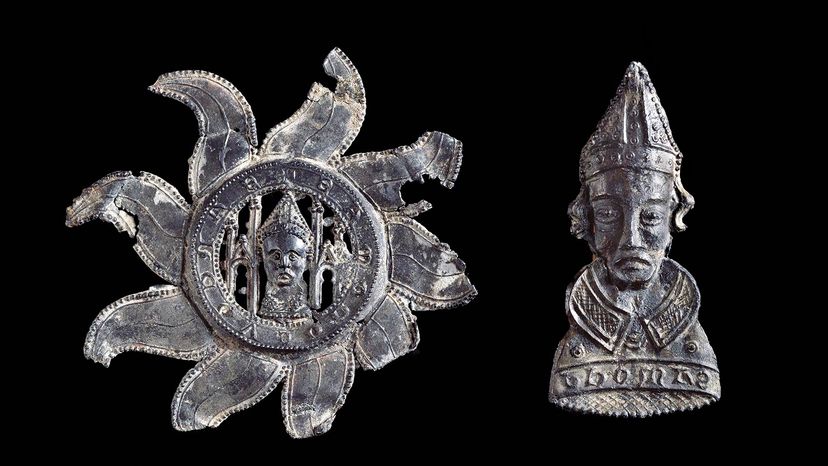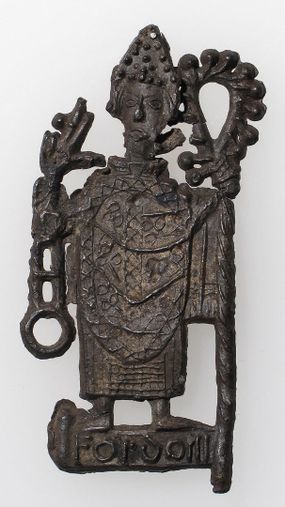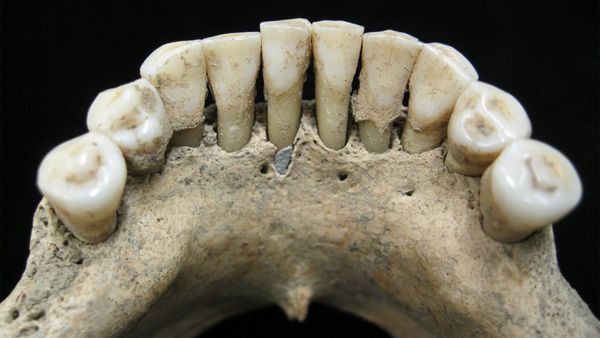
In the Middle Ages, religious pilgrimages were all the rage in Europe. In spite of plagues and famines that ravaged the population in the 13th and 14th centuries, tens of thousands of people would walk for months to end up at the Santiago de Compostela cathedral in northwest Spain each year to pay their respects, receive absolution or pray for healing at the tomb of the apostle James. There were many more holy sites of varying popularity — the Seven Pilgrimage Churches of Rome and the Holy Land route (Jerusalem, Bethlehem and Nazareth) were the big time, but the church also encouraged pilgrimages to smaller shrines, like the tomb of Thomas Becket in the English county of Kent, the destination of the ragtag band of pilgrims depicted in Geoffrey Chaucer's "Canterbury Tales."
No matter the distance, it was an accomplishment, hoofing it over hundreds or thousands of miles to arrive at a holy site, so naturally medieval pilgrims would want a souvenir to prove they had made the trek, to signal they belonged to a specific religious community and to serve as a sort of protective talisman.
Advertisement

As a result, an industry emerged to satisfy the pilgrims: Badges made out of a tin-lead alloy that they could pin to their hat or cloak were mass-produced and became wildly popular. Most of these badges depicted what you're probably imagining: saints being martyred, angels, animals with religious significance, pilgrims emerging victorious and spiritually cleansed from the pilgrimage site, etc. But some of them were a little more ... secular.
Take, for instance, the badge depicting a giant vulva with arms and legs and a hat, holding a staff adorned with an erect phallus. Or the three phalluses manning a sailboat, or the winged, crowned phallus wearing a bell around its "neck" or the vulva on horseback, hunting with a bow and arrow. Honestly, there are so many different sexual motifs, and they're so bizarre and fascinating that it's easy to just ogle them without questioning why they were made in the first place.
But most scholars studying medieval pilgrimage badges have a surprising theory for the purpose of such bawdy images: These badges were specifically made to ward off plague. The Black Death, which killed 25 million Europeans during this period, was terrifying in part because this was long before the germ theory of disease revolutionized the way we kept diseases from spreading. Nobody really knew how everyone was getting the plague — it was just as feasible that bad air or an imbalance in somebody's humours was the culprit as it was that sick people were passing it along to their friends just by looking at them. It was probably this last one — the sickly looks — that the lewd badges were trying to fend off.
Although it's impossible to say exactly what the medieval pilgrims were thinking with these ridiculous and obscene pins, many scholars suggest that they were almost certainly not intended to be erotic. At the time, a virulent illness and an evil spirit were considered extremely close relatives, if not one and the same. Protective talismans like the Evil Eye have been used since ancient times to ward off the unwelcome and ill-intentioned stares of others, and images of genitalia have similarly been thought to have potent protective powers in cultures all over the world.
Regardless of whether medieval pilgrims were correct or not about the method of disease transmission, the image of a lion with a giant phallus in its jaws pinned to somebody's lapel would probably make you look away from that person pretty quickly.
Advertisement
